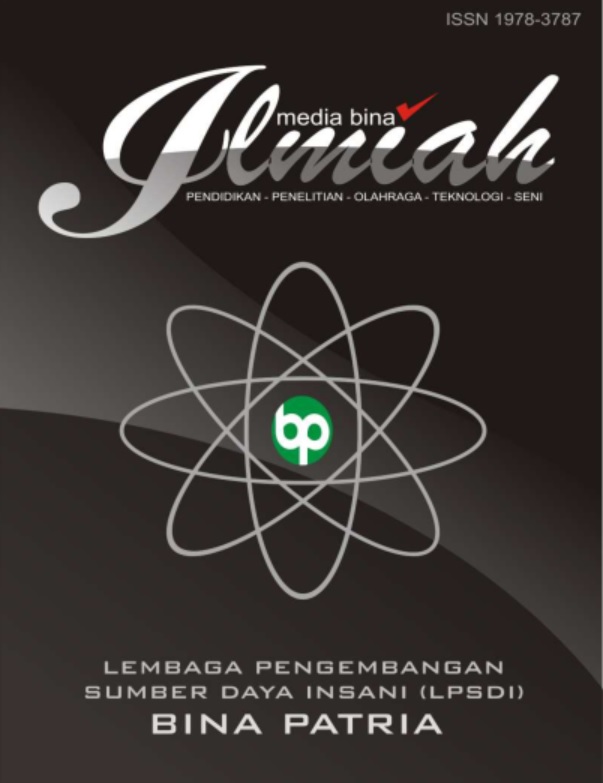HUBUNGAN ANTARA JOB DEMAND DENGAN WORKPLACE WELL BEING PADA KINERJA KARYAWAN PERUSAHAAN MANUFAKTUR DI JAWA TENGAH
Keywords:
Tuntutan Pekerjaan, Kesejahteraan Di Tempat KerjaAbstract
Penelitian ini bertujuan untuk menganalisis hubungan antara tuntutan pekerjaan (job demand) dengan kesejahteraan di tempat kerja (workplace well-being) serta dampaknya terhadap kinerja karyawan pada perusahaan manufaktur di Jawa Tengah. Metode yang digunakan adalah deskriptif kuantitatif dengan pengumpulan data melalui kuesioner yang disebarkan kepada 100 karyawa. Teknik analisis yang diterapkan adalah regresi linier berganda untuk mengetahui hubungan dan pengaruh antar variabel. Hasil penelitian menunjukan bahwa kesejahteraan di tempat kerja memiliki pengaruh yang signifikan terhadap kinerja karyawan (p < 0,05), sedangkan tuntutan pekerjaan tidak memberikan dampak signifikan secara langsung. Implikasi penelitian ini menekankan pentingnya manajemen dalam menyeimbangkan tuntutan beban kerja dan meningkatkan kesejahteraan karyawan guna mendukung kinerja optimal di industri manufaktur.
References
Bakker & Demerouti, 2007. (2007). The Job Demands-Resources model: State of the art. Journal of Managerial Psychology, 22(3), 309–328. https://doi.org/10.1108/02683940710733115
Bakker, A. B., Demerouti, E., Nachreiner, F., & Schaufeli, W. B. (2001). Articles_Arnold_Bakker_69.Pdf. Dalam Journal of Applied Psychology (Vol. 86, Nomor 3, hlm. 499–512).
Bakker dan Demerouti. (2017). Job Demands-Resources Theory: Taking Stock and Looking Forward Job Demands – Resources Theory: Taking Stock and Looking Forward. 22(September 2018), 273–285.
Campbell & Wiernik. (2015). The Modeling and Assessment of Work Performance. Dalam Annual Review of Organizational Psychology and Organizational Behavior (Vol. 2). https://doi.org/10.1146/annurev-orgpsych-032414-111427
Cavanaugh, Dk. (2000). An Empirical Examination of Self-Reported Work Stress Among U. S. Managers. 85(1), 65–74.
Cronbach. (1951). Coefficient alpha and the internal s t r u c t u r e of tests* lf~ j. Cronbach. 16(3).
Deci dan Ryan. (2000). The “what” and “why” of goal pursuits: Human needs and the self-determination of behavior. Psychological Inquiry, 11(4), 227–268. https://doi.org/10.1207/S15327965PLI1104_01
Diener, E., & Seligman, M. E. P. (2004). Beyond Money: Toward an Economy of Well-Being. Psychological Science in the Public Interest, 5(1), 1–31. https://doi.org/10.1111/j.0963-7214.2004.00501001.x
Field. (2012). Discovering statistics using R. Choice Reviews Online, 50(04), 50-2114-50–2114. https://doi.org/10.5860/choice.50-2114
Herzberg. (1959). Relations industrielles The Motivation to work , by F. Herzberg , B. Mausner and B. -C. RECENSIONS - BOOK REVIEWS.
Hibah & keyyes. (1995). The Structure of Psychological Well-Being Revisited. 69(4), 719–727.
Karasek, R. A. (1979). Job Demands, Job Decision Latitude, and Mental Strain: Implications for Job Redesign. Administrative Science Quarterly, 24(2), 285. https://doi.org/10.2307/2392498
Kementerian Perindustrian, 2022. (2022). Pengaruh Kinerja Industri Manufaktur Terhadap Penyerapan Tenaga Kerja Dan Indeks Pembangunan Manusia Di Provinsi Banten. Jurnal Ekonomi, 24(1).
Maslow. (1943). A theory of human motivation. Defining and Classifying Children in Need, August, 101–127. https://doi.org/10.4324/9781315258324-16
Morgeson dan Humphrey. (2006). The Work Design Questionnaire (WDQ): Developing and validating a comprehensive measure for assessing job design and the nature of work. Journal of Applied Psychology, 91(6), 1321–1339. https://doi.org/10.1037/0021-9010.91.6.1321
Motowidlo & Kell. (2012). Job Performance. 82–103.
Nugraheni, K. S., & Triatmanto, B. (2022). The role of organizational commitment as mediation of the influence of transformational leadership on hotel employee performance. European Journal of Business and Management Research, 7(6), 84–88.
Ray Octafian, K. S. N. (2022). COVID-19: Analisis Job Insecurity dan Job Engagement Terhadap Job Performance Karyawan Hotel di Semarang. JENIUS Jurnal Ilmiah, Manajemen Sumber Daya Manusia, 5(2), 429–438.
Robbins dan Judge. (2019). Organizational behavior.
Robert, G., & Hockey, J. (1997). Compensatory control in the regulation of human performance under stress and high workload: A cognitive-energetical framework. 1(96).
Scales, L., & Sullivan, G. M. (2013). Analyzing and Interpreting Data From Likert-Type Scales. December, 541–542.
Schaufeli & Taris. (2014). Bridging occupational, organizational and public health: A transdisciplinary approach. Bridging Occupational, Organizational and Public Health: A Transdisciplinary Approach, 9789400756, 1–249. https://doi.org/10.1007/978-94-007-5640-3
Schaufeli dan Bakker. (2004). Job demands , job resources , and their relationship with burnout and engagement: A multi-sample study. 315(October 2002), 293–315.
Vella-Brodrick, P. &. (2009). The ‘ What ’, ‘ Why ’ and ‘ How ’ of Employee Well-Being: A New Model. 441–458. https://doi.org/10.1007/s11205-008-9270-3
Widodo dan Santoso. (2023). Bridging: Journal of Islamic Digital Economic and Management ISSN : 3025-9177 Pengaruh Gaya Kepemimpinan Dan Lingkungan Kerja Terhadap Kinerja Karyawan Pada Pt Airmas. 2(1), 41–55.
Downloads
Published
Issue
Section
License
Copyright (c) 2025 Teri Putri Telaumbanua , Krisnawati Setyanigrum Nugraheni

This work is licensed under a Creative Commons Attribution 4.0 International License.
















